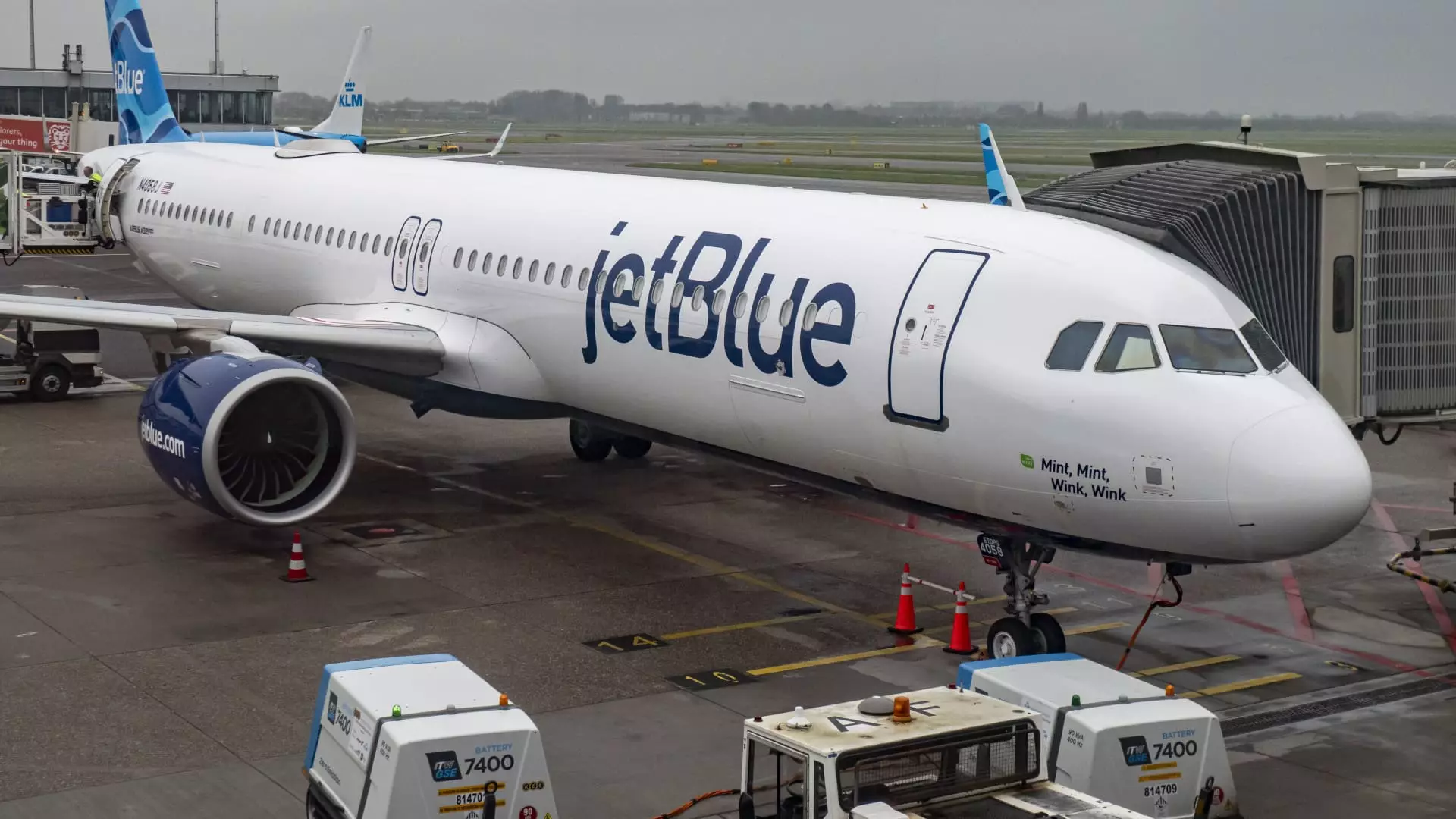In an exciting move aimed at capturing a segment of higher-paying travelers, JetBlue Airways is set to roll out domestic first-class seating in 2026 on its aircraft that currently lack the flagship Mint class. This decision marks a significant strategic shift for the airline, focusing on enhancing customer offerings and steering the company back towards profitability. As revealed by president Marty St. George in a recent communication to employees, these enhancements will consist of two to three rows of first-class seating on all applicable Airbus planes.
The introduction of domestic first-class service represents a layered approach to meet an evolving market demand, particularly as JetBlue transitions away from a more narrow model. St. George noted that while the Mint service has been a hallmark of JetBlue’s premium offerings for over a decade, replicating such a top-tier experience on shorter flights presents unique challenges. To address this, the airline has devised a solution aimed at satisfying passengers who are looking for additional comfort without the full Mint experience.
JetBlue’s pivot comes in response to a variety of factors, including recent judicial challenges that blocked its acquisition of Spirit Airlines and curtailed its partnership with American Airlines in the Northeast, which had been deemed anticompetitive. These setbacks have prompted the airline to rethink its operational framework while honing in on its core markets in both Florida and the Northeast. This strategy reflects a broader trend in the airline industry where premium seating options are increasingly in demand, particularly post-pandemic.
Acknowledging the competitive landscape, JetBlue is strategically aligning its offerings with customer preferences. Recent surveys indicate that many leisure travelers are open to spending more for enhanced experiences, including roomier seats and added amenities such as access to airport lounges. The potential for growth in this area is undeniable, and JetBlue is keen to seize the opportunity as travelers return to the skies.
Marty St. George, a seasoned industry veteran, has returned to JetBlue with a fresh mandate from new CEO Joanna Geraghty to revitalize the airline’s profitability. In recent months, JetBlue has initiated several cost-cutting measures, including a reevaluation of its less profitable routes, as it seeks to refine its operational model and position itself more competitively against larger carriers. St. George’s return has been marked by a sense of urgency to innovate and explore new avenues for revenue generation.
Under St. George’s leadership, JetBlue remains committed to its legacy of challenging the status quo within the U.S. airline sector. The airline was one of the pioneers in making air travel more accessible and enjoyable, infusing offerings such as seat-back entertainment and more affordable business class options. As the industry landscape evolves, JetBlue’s strategy to introduce a domestic first-class alternative aligns well with its historical ethos of customer-centric innovation.
JetBlue’s plan also involves fine-tuning its European service and recently announced the launch of a new flight connecting Boston to Madrid. This ambitious expansion reflects not only a focus on bolstering revenue streams but also an intention to strategically position itself as a player in international travel.
As airlines like Alaska Airlines are evaluating their own premium seating offerings in light of mergers and market expansion, JetBlue’s imminent roll-out of domestic first-class services stands as a testament to its adaptability. The airline industry is witnessing a renewed interest in premium seating options, and JetBlue appears intent on making its mark in this burgeoning segment.
JetBlue Airways is not just adding domestic first-class seats; it is reimagining flight experiences and positioning itself for a robust post-pandemic recovery. As it prepares for its 2026 launch, the airline must continue to innovate and stay ahead of competitors while remaining true to its founding principles of value and customer satisfaction. The road ahead will be crucial as JetBlue endeavors to navigate an increasingly complex and competitive airline landscape.


Leave a Reply